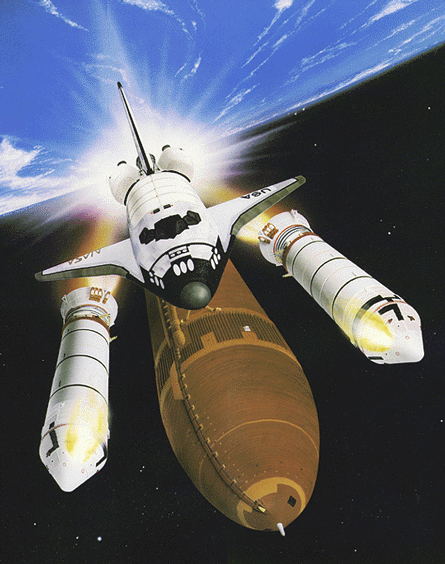Although it is not much mentioned today, NASA's earliest concept - predating even Apollo and the 1960s Moon race - for what would become the US Space Shuttle programme was to provide a reliable, reusable way to get to a space station that had not yet been built or even contracted to be built.
But while the vision remained live, the station part of it proved to a hard sell in Washington and the orbiter programme moved ahead without a destination, focusing on space research and missions such as repair trips to the Hubble space telescope.
It took decades, but now the station is nearly complete - just in time for the Shuttle fleet's retirement. So, imminently, the only way to reach the International Space Station will be by Russian Soyuz rockets. And many Americans find that unpalatable.
 |
|---|
© NASA/Morton Thiokol |
After zig-zagging on space policy for months, the Obama administration looks set to settle on a stripped-down version of a manned space programme that relies in large part on the commercial space industry.
Or has it?
A presidential commission charged with drastically reducing government spending recently made $200 billion in budget cut suggestions including a $1.2 billion cut that would wipe out a public-private commercial space venture that Obama proposed in June as the way to build the USA's next manned spaceflight vehicle.
Aerospace companies say they can provide reliable access to space and the station, in partnership with NASA. Some, like Boeing, have already struck deals with other companies, to sell to other countries or private citizens, seats that NASA won't be using. But they also say they cannot close the business case to design and build the next generation of manned space vehicles without a commitment from the US government.
What Washington needs to recognise is that it can't freeze its support for manned spaceflight without sacrificing the jobs - that is, people - that carry the institutional knowledge of how to fly in space that has been accumulated at great expense over 60 years. To one day rebuild that capability would cost far more than can be saved in cuts today.
It may be that the USA's space ambitions will be better supported by replacing traditional top-down NASA-driven programmes with commercial enterprises. But there is no escaping the need, either way, for the government to supply reliable funding for the necessary research and development.
Source: Flight International


























